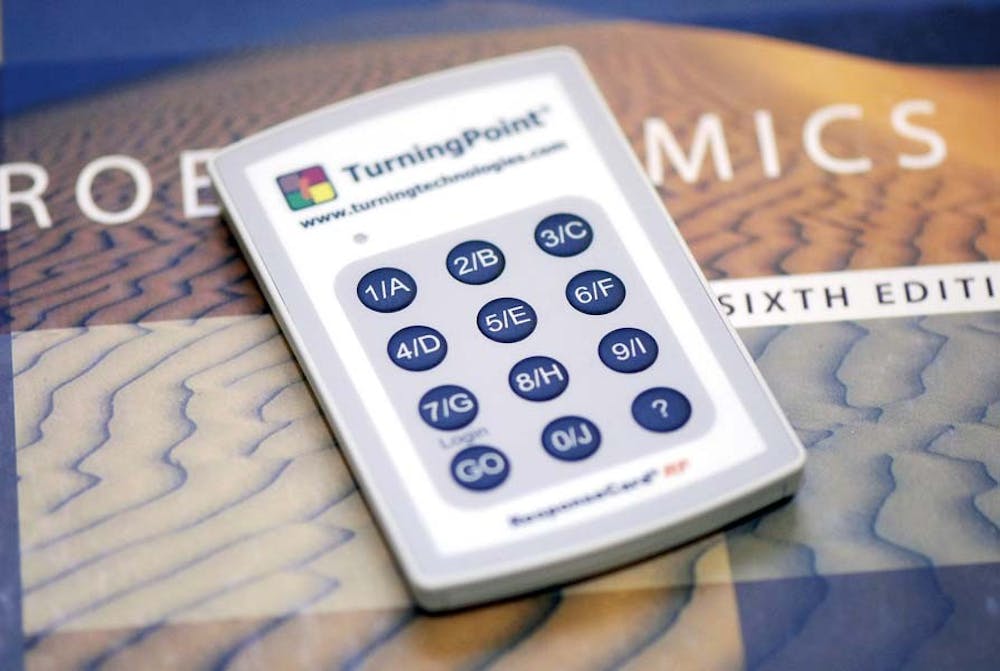This year, students are clicking their way toward a more interactive classroom environment, though some think the costs outweigh the benefits.
This semester is the first in which many School of Arts and Sciences professors are requiring students to purchase "clickers" - small devices that allow professors to collect and display data from students during class time.
Professors use responses from these clickers to conduct quizzes, take attendance, initiate class discussion and elicit responses from less vocal students.
Each student taking a SAS class that uses the equipment must buy a clicker for $40. They can sell back the device at the end of the year for $20.
According to director of SAS Computing John MacDermott, SAS, Wharton and the Nursing school purchased clickers in spring 2007, which they loaned to professors in order to standardize the technology. It wasn't until last spring that SAS began requiring students to buy their own.
SAS Computing senior specialist Elizabeth Scheyder explained that this change came about as it became clear that faculty interest in the devices was growing rapidly and the traditional method of loaning clickers for free "really just wasn't scalable" to the increased demand.
She added that not only did the rising number of clickers make it difficult to keep track of the devices, but it became financially impossible for SAS to provide a clicker to each student.
But Wharton does not require students to buy their own clickers, and Nursing tries to keep it to a minimum.
Wharton Computing currently has 1,000 clickers that are loaned out to professors as needed, said director of Wharton Computing Don Huesman.
And in the Nursing School, only two classes require that students purchase clickers, Nursing professor Mary Ann Lafferty-Della Valle wrote in an e-mail. The faculty share 120 clickers purchased by the school.
Even with the added cost, the response from SAS faculty has been overwhelmingly positive so far.
Biology professor Philip Rea said the clickers give less vocal students the opportunity to participate in class discussions.
Rea added that the devices can also act as a way of determining which topics in lecture need further explanation.
Physics professor Paul Heiney, who used clickers in his Physics 101 class this summer, said "the feedback that I have gotten [from students] has been very positive," despite the added financial burden.
Although professors agree that student feedback has been encouraging, many students say that the clickers are not all they are cracked up to be.
"It's not completely necessary," said Engineering sophomore Karen Liao. "I think it would be a better idea if [the clickers] weren't so expensive."
"I didn't like that it.was really expensive," said Engineering sophomore Kathryn Downes. "But it makes me participate in class in a way that I would not usually."
But despite some drawbacks, officials say the use of clickers will continue to grow.
"If you've got somebody who's sitting in the back and never talks, give them a clicker!" said Huesman, adding that clickers allow professors to "break down that problem of the herd because you can actually get at the minority report."



